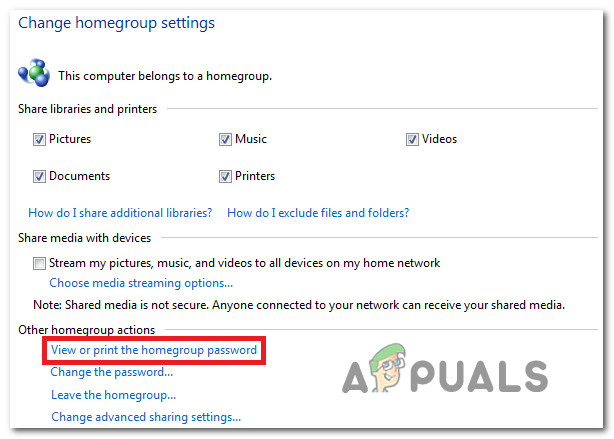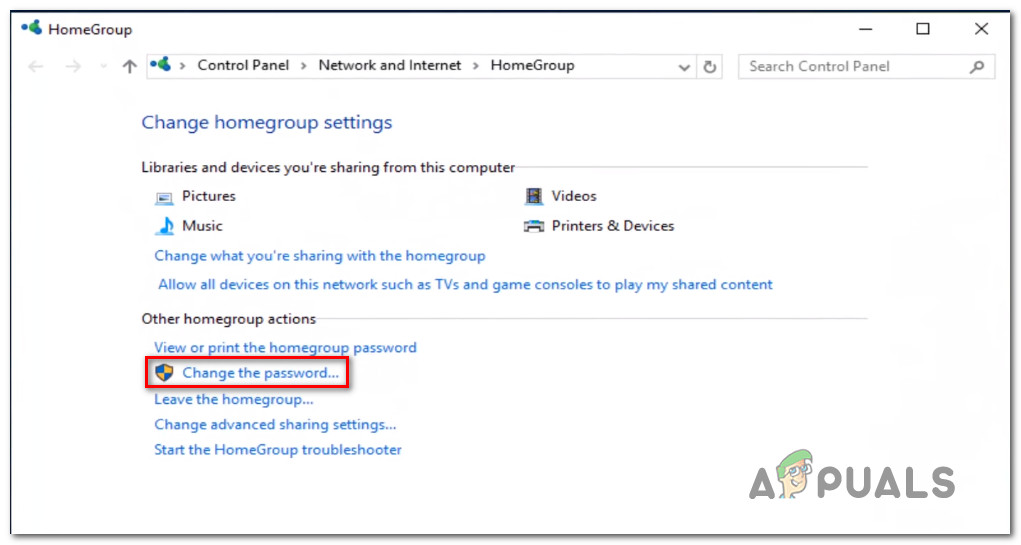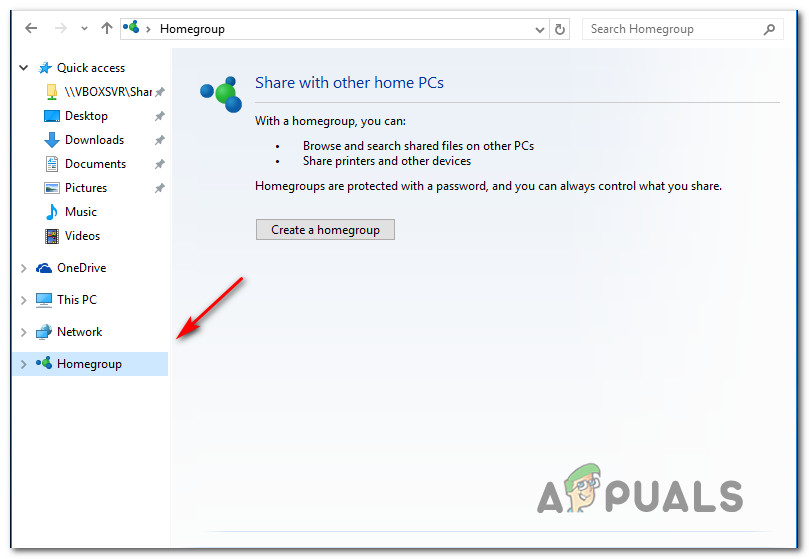How to Retreive or View HomeGroup Password in Windows?
Several users have been having trouble retrieving or recovering the password of the homegroup used for their local network. Most affected users are either trying to add a new computer to the HomeGroup or they’re trying to dismantle the current one. The issue is mostly encountered on Windows 10.

What is Windows homegroup?
A homegroup is a group of PC’s that are configured to share files and printers.
Using a homegroup makes it easier for media files (documents, music, videos, pictures, etc.) with other Windows computers connected to the same local home network. Another awesome feature is that you can stream media to devices directly – without having to download the file first.
When a PC creates a homegroup for the whole network, Windows automatically protects it with a password. In order for other computers to join the homegroup, they’ll need the homegroup password in order to get in.
Important: Starting with Windows 10 build 17063, the HomeGroup service is no longer operational in Windows 10. But fortunately, the user profile used for sharing the files, folders or printers will continue to work. This changed is a direct result of Microsoft pushing their OneDrive service.
How to Retrieve or View HomeGroup Password in Windows 10
If you’re looking for a quick way to view the password of your homegroup we have created three different methods that will help you retrieve it.
Every guide will eventually take you to the same screen, so make sure you follow the one that is the most approachable to your current situation.
Note: Unless your Windows 10 build is older than Windows 10 build 17063, none of the methods below will be applicable since the HomeGroup feature was effectively removed from the latest versions.
Method 1: Using File Explorer
Perhaps the quickest way to retrieve your current HomeGroup password is to use the dedicated HomeGroup password button from the left-hand side menu of File Explorer.
Here’s a quick guide on how to get there:
- Open File Explorer.
- Go over to the right-hand pane, right-click on your Homegroup and click on View the HomeGroup password.

Accessing the HomeGroup password via File Explorer - You’ll be taken directly to a screen where you can view your HomeGroup password in a yellow box.

Recovering the HomeGroup password
Method 2: Using the HomeGroup ribbon at the top
Another way to access the current HomeGroup password is to select the current HomeGroup inside File Explorer and then access the HomeGroup tab from the newly appeared ribbon bar. Here’s a quick guide on how to do this:
- Open File Explorer.
- Use the left-hand menu to click on the Homegroup tab to select it.
- With the Homegroup go to the ribbon bar at the top and click on HomeGroup from the ribbon bar at the top.
- Then, click on View password and you will be taken to a screen where you will be able to retrieve your HomeGroup password.

Accessing the HomeGroup password via Ribbon bar - You will then be taken to a menu where you can see your HomeGroup password inside a yellow box.

Recovering the HomeGroup password
Method 3: Viewing HomeGroup Password via Control Panel
Another way to to go around retrieving your Homegroup password is by using the Control Panel menu dedicated to the Homegroup. Here’s a quick guide on how to do this:
- Press Windows key + R to open up a Run dialog box. Then, type “control” and press Enter to open up the classic Control Panel window.

Accessing the classic Control Panel interface - Inside Control panel, click on HomeGroup (use the search function in the top-right corner if the menu is not among the visible items)
- Inside the HomeGroup menu, click on View or print the homegroup password.

View or print the homegroup password via Control Panel - You will be taken to the menu where your HomeGroup password will become visible inside a yellow box.

Recovering the HomeGroup password
How to change the HomeGroup Password in Windows 10
If you’ve used the methods above to view your current Homegroup password but now you’re looking for a way to change it, we’ve got you covered. The instructions below will help you change the current password that you’re using for your local HomeGroup.
But before you start following the instructions, keep in mind that in order for this to work, all homegroup computers need to be ON (NOT asleep and NOT hibernating).
Once the requirement is in check, here’s what you need to do:
- Press Windows key + R to open up a Run dialog box. Then, type “control” and press Enter to open up the classic Control Panel interface.

Accessing the classic Control Panel interface - Inside Control Panel, click on HomeGroup – or use the search function to find the option if it’s not visible from the get-go.
- Inside the HomeGroup settings, simply click on Change the password.

Changing the password of the HomeGroup - Then, from the newly appeared Change Your Homegroup Password window, click on Change the password.
- In the next screen, type the HomeGroup password yourself or click the icon associated with the box to have Windows generate a new one for you. Hit Enter register the change, then click Next.

Changing the homegroup password - That’s it, once the password has been changed, you’ll see a new window with a yellow box containing your new password. Share it with other computers connected to the same network to allow them to connect to the HomeGroup.





